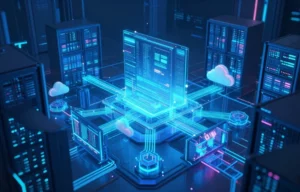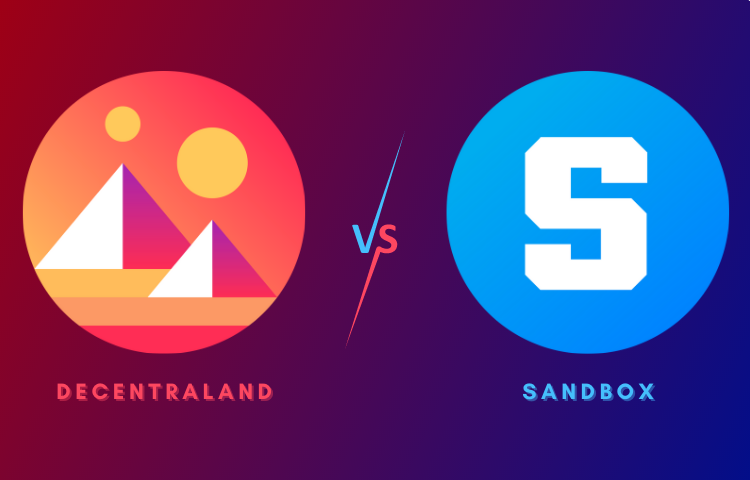

Prefer to listen instead? Here’s the podcast version of this article.
The metaverse has been a hot topic of late. As tech giants announce plans to build their own metaverses and pour millions (and sometimes billions) of dollars into the emerging virtual worlds, consumer interest is spiking.
Unbeknownst to some, there are some metaverses already available to the public. Two of the leading metaverses currently accessible to users are Decentraland and Sandbox. To understand these two virtual worlds and what they offer, we dive into each platform and cover the basics below.
Decentraland was one of the first players in the metaverse. The platform launched in 2017 with an initial coin offering of $26 million (raising 86,206 ETH) to provide a comprehensive and immersive 3D metaverse. Since its debut, Decentraland has been the longest-existing and operational metaverse project to date.
Based on the Ethereum blockchain, Decentraland allows users to participate in various activities. Users can play games, buy and own land, attend events like concerts, and even gamble in casinos. Users can access Decentraland through an internet browser and do not need an account, however, creating an account grants users access to more features.
Decentraland is associated with two specific tokens — MANA and LAND. While MANA is the native token of this metaverse, LAND represents parcels of land in the virtual world. Users can spend (burn) MANA to get LAND tokens, along with upgrading and buying avatars, names, products, services, and more.
Powered by cryptocurrency, every tract of virtual land is represented as an NFT. Much like land in the real world, there is a finite amount of land in Decentraland. Therefore, no more land can be created, which increases the value of the land due to scarcity. In total, there are 90,601 plots of land in Decentraland.
As the name suggests, Decentraland is decentralized. Decentraland offers buyers complete ownership access. Profits produced off this “land” go entirely to the owners and anyone using the land. No regulatory authority exists to take a cut from land sales, which also means there are no taxes. Additionally, users can even buy a mortgage in Decentraland.
Sandbox is a decentralized gaming platform built on Ethereum, where users can create, use, and sell NFTs. To access Sandbox, users need to create an account with the platform.
A differentiating aspect of Sandbox is that it is a user-generated content ecosystem where users create and build the virtual world. Contributing to this metaverse is relatively simple, even without any coding knowledge. There are three main methods within Sandbox that allow users to create and add content with minimal hassle. They are:
Items, avatars, and characters created in VoxEdit are called ASSETS, which can be turned into NFTs. As for Sandbox games, they run on 3D pixels called voxels. Think of voxels as virtual Lego pieces users can leverage to build experiences within the platform.
$SAND is the native token used in Sandbox. Players must own $SAND to play games, customize avatars, buy LAND, or trade ASSETS on the Marketplace. $SAND owners can also propose and vote on potential changes to the platform. To get $SAND, users can play Sandbox games, participate in contests, or buy it on cryptocurrency exchanges such as Binance.
Users can stake $SAND inside the game to earn rewards, which may even amount to a share in the revenue generated from $SAND transactions. Staking $SAND also increases a user’s chance of finding GEMs and CATALYSTs — resources required to create more rare and valuable ASSETS.
Much like Decentraland, LAND in Sandbox is represented as an NFT on the Ethereum blockchain. LAND can be purchased, customized (developed), and sold. Users can build everything from games to art galleries on LAND. In total, there are 166, 464 plots of land in Sandbox. Users can purchase land on the Sandbox platform, as well as on OpenSea.
The Decentraland and Sandbox metaverses focus on different areas. Decentraland places a larger emphasis on buying, selling, and trading digital land on the platform. Therefore, Decentraland is more popular among investors and businesses looking to invest, as they view real estate in Decentraland as a high-growth opportunity. However, the market is still volatile and careful consideration and research should be done before investing in plots of land. Decentraland is also ideal for users who wish to utilize the platform’s built-in activities, such as games, gambling, and concerts.
On the other hand, Sandbox is more geared towards artists, creators, and players. Sandbox permits and encourages users to build the Sandbox world according to their imagination. This gives players more control of the platform and allows them to influence the direction of the virtual world. Additionally, Sandbox plans to launch a DAO in 2022, which will grant users even greater input in the platform’s operations and future.
In the showdown of Decentraland vs. Sandbox, the winner depends on a user’s preferences and what they want out of their metaverse experience. Decentraland tends to be better for users who wish to buy, trade, and sell land, while Sandbox may be better suited for individuals who want to help shape and build the emerging platform. Overall, the growing interest in both platforms prove to be optimistic for the longevity and popularity of the metaverse.
WEBINAR